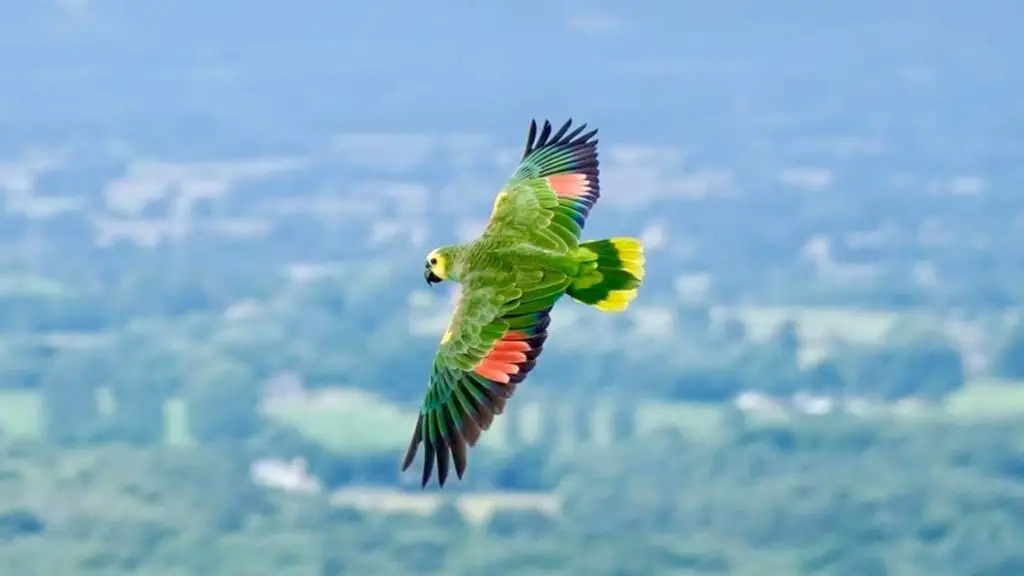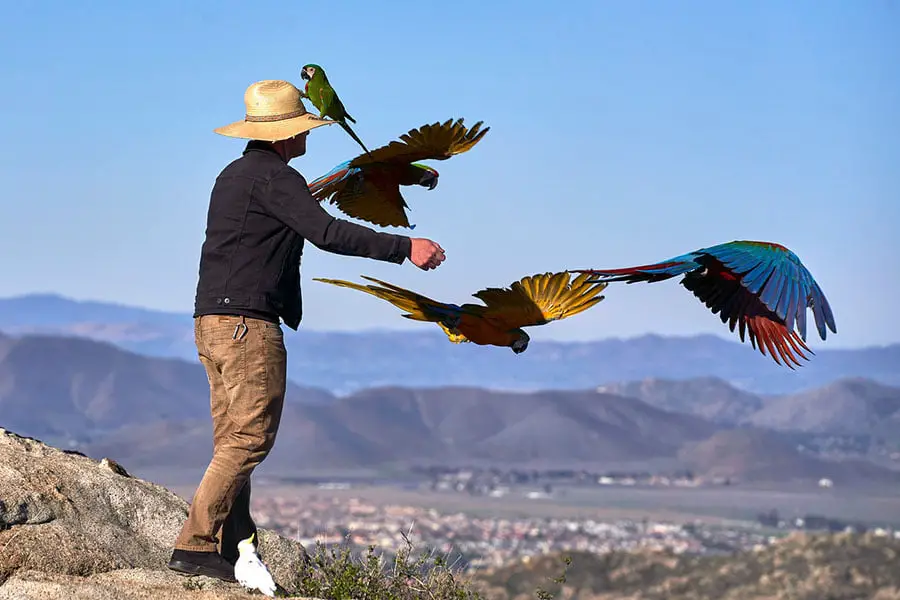Blogs, Behaviors & Training
Can Parrots Fly?
Debunking Myths and Clarifying Realities
Can Parrots Fly? People often wonder about the flight capabilities of parrots. It’s a common misconception that all parrot species possess the ability to fly effortlessly. However, the reality is more nuanced. In this article, we’ll explore the intricacies of parrot flight, debunking myths and clarifying the realities of these fascinating birds.
Understanding Parrot Anatomy
Parrots possess unique anatomical features that are integral to their ability to fly. Their lightweight bodies, strong beaks, and zygodactyl feet (two toes facing forward and two facing backward) are adapted for aerial mobility. Additionally, parrots have strong breast muscles that power their flight, enabling them to maneuver swiftly through the air.
Flight Adaptations in Parrots
The flight capabilities of parrots vary depending on their species and habitat. Most parrots are skilled fliers, capable of covering long distances in search of food and shelter. Their wings are equipped with specialized feathers that provide lift and control during flight. These adaptations allow parrots to navigate diverse environments, from dense rainforests to open savannas.
Factors Affecting Parrot Flight
Several factors influence the flight behavior of parrots. Environmental conditions such as wind speed, temperature, and humidity can affect their ability to fly efficiently. Additionally, behavioral factors such as social interactions and mating rituals play a role in determining when and how parrots take flight.
Flightless Parrot Species
While many parrot species are proficient fliers, some are flightless or have limited flight capabilities. Examples include the Kakapo of New Zealand and the Flightless Parrots of the genus Cyanoramphus. These birds have evolved in environments where flight is not necessary for survival, leading to the loss of flight over time.
Flight Training for Pet Parrots
Pet parrots require proper flight training to ensure their physical and mental well-being. Encouraging natural flight behaviors helps to strengthen their muscles and prevent obesity-related health issues. By providing ample space and opportunities for flight, pet owners can enhance the quality of life for their feathered companions.
Challenges Faced by Flying Parrots
Flying parrots face numerous challenges, including habitat loss, poaching, and predation by invasive species. Human activities such as deforestation and illegal wildlife trade pose significant threats to parrot populations worldwide. Conservation efforts are essential to protect flying parrot species and their habitats.
Common Misconceptions About Parrot Flight
There are several misconceptions surrounding parrot flight abilities. One common myth is that all parrots are capable of long-distance migration. While some species undertake seasonal movements in search of food and breeding sites, not all parrots exhibit this behavior. Additionally, the notion that flightless parrots are less intelligent or inferior is unfounded and inaccurate.
Parrot Flight in Popular Culture
Parrot flight has captured the imagination of people around the world and has been depicted in various forms of media and literature. From the colorful macaws of the Amazon to the majestic cockatoos of Australia, parrots have become symbols of freedom and adventure in popular culture. However, it’s essential to recognize that behind the romanticized portrayals lies a deeper understanding of the ecological significance of parrot flight.
Conclusion
In conclusion, parrots are remarkable creatures with diverse flight capabilities. While some species are adept fliers, others have adapted to a flightless lifestyle in unique environments. Understanding the complexities of parrot flight is crucial for their conservation and welfare. By dispelling myths and embracing realities, we can foster a deeper appreciation for these extraordinary birds.
FAQs (Frequently Asked Questions)
- Can all parrot species fly?
- While most parrot species are capable of flight, there are exceptions. Some parrots, such as the Kakapo, have evolved to be flightless.
- How do parrots learn to fly?
- Parrots learn to fly through practice and observation. Young parrots often mimic the flight patterns of adult birds until they develop the strength and coordination to fly independently.
- Do pet parrots need flight training?
- Yes, flight training is essential for pet parrots to maintain their physical health and mental stimulation. Providing opportunities for flight in a safe environment is beneficial for their overall well-being.
- Why are flightless parrots endangered?
- Flightless parrots are vulnerable to habitat loss, predation, and human activities such as deforestation and poaching. Conservation efforts are crucial to protect these endangered species.
- Can flightless parrots be reintroduced into the wild?
- Reintroducing flightless parrots into the wild poses significant challenges due to their specialized habitat requirements and susceptibility to predation. Conservation organizations carefully assess the feasibility and risks of such initiatives.



